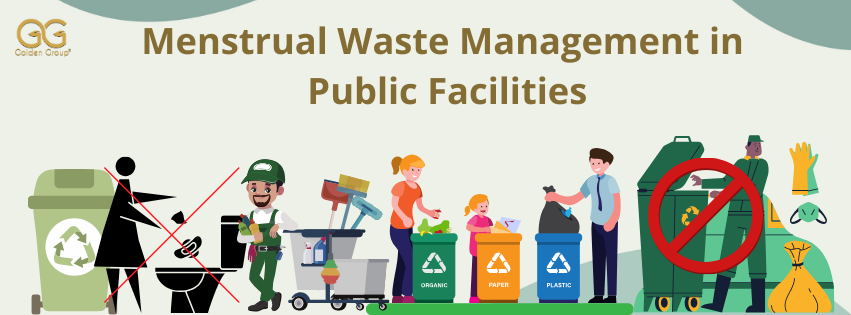
Menstrual waste management in public facilities is a persistent yet often overlooked challenge that affects hygiene, user comfort, public health, and the environment. As more women and menstruators rely on public spaces like schools, transit hubs, workplaces, and recreational centers, effective solutions for handling menstrual waste are more critical than ever. However, technical, cultural, infrastructural, and operational barriers continue to hamper progress.
This article explores the most common challenges and practical strategies for addressing them to create cleaner, safer, and more dignified public facilities.
The Scope of the Challenge
Millions rely on public restrooms and shared toilets each day. Without proper menstrual waste management systems, users encounter overflowing bins, lack of disposal options, or are forced to flush pads and tampons down toilets—a practice that causes blockages, unsanitary conditions, and environmental harm. Ignoring these issues not only inconveniences users but poses health risks for custodial staff and the wider community.
1. Inadequate Infrastructure for Disposal
Common Issues
- **Lack of Disposal Bins:** Many restrooms do not provide bins at all, or only in select stalls. Where bins do exist, they are often uncovered, dirty, or overfilled.
- **Outdated Receptacles:** Metal or plastic wall-mounted boxes—the norm in many facilities—are not always lined, touchless, or easy to clean, exposing users and workers to contamination.
- **Poor Placement:** Bins placed outside stalls or in common areas force users to carry used products across the restroom, denying them privacy and dignity.
Key Solutions
- Install **covered, lined disposal bins inside every stall** to maximize convenience and privacy.
- Upgrade to **touchless disposal units** to reduce the risk of cross-contamination and encourage use.
- **Clear signage** in each stall, reminding users not to flush products and how to dispose of them appropriately.
2. Maintenance and Operational Barriers
Common Issues
- Disposal bins are often not emptied or cleaned frequently enough, resulting in bad odor, overflows, and unhygienic buildup.
- Lack of training and inadequate personal protective equipment (PPE) for custodial staff increases their risk of exposure to pathogens.
- In some settings, no clear responsibility is assigned for the removal and safe treatment of menstrual waste, leading to inconsistency.
Key Solutions
- Ensure **regular and timely maintenance schedules** for all disposal units, emphasizing emptying, cleaning, and disinfection.
- Provide custodial staff with **adequate PPE and targeted training** on safe handling and bloodborne pathogen risk.
- Consider outsourcing menstrual waste handling to **certified third-party providers**, especially for large or complex facilities, to ensure expertise and compliance.
3. Environmental and Systemic Impact
Common Issues
- Flushing of pads and tampons is a major cause of **sewer blockages, backups, and sanitation system failures**.
- Most commercial menstrual products contain **non-biodegradable plastic components**, which persist in landfills and cause environmental degradation if improperly disposed of.
- Burning or incineration of pads releases potentially harmful pollutants if not properly managed.
Key Solutions
- **Provide single-use disposal bags** so users can contain waste securely before depositing in bins, decreasing the temptation to flush items.
- Clearly mark bins and provide educational materials about the **impact of improper disposal** on plumbing and the environment.
- Support **recyclable and compostable product choices** whenever feasible, and invest in incinerators designed to operate within controlled environments, mitigating harmful emissions.
4. Social and Cultural Barriers
Common Issues
- **Taboos and stigma** around menstruation discourage users from openly seeking disposal or discussing needs with facility managers.
- Lack of educational campaigns leads to widespread misunderstanding of safe disposal practices.
Key Solutions
- Develop **inclusive, gender-sensitive infrastructure and protocols** that respect privacy and dignity, such as gender-neutral restrooms with proper amenities.
- Run public awareness campaigns, both on-site (e.g., posters, flyers) and broadly, to normalize conversations about menstrual hygiene and waste.
- Consult menstruators in the **design and evaluation of restroom upgrades** to ensure their needs are prioritized.
5. Policy and Regulatory Gaps
Common Issues
- Few regions have comprehensive guidelines or enforceable policies dedicated to menstrual waste management, placing the onus on individual facilities.
- Existing waste management policies often overlook **waste segregation at the source** and specialized treatment for menstrual waste.
Key Solutions
- **Advocate for policy reform** at national and local levels to include menstrual waste explicitly in sanitation and solid waste management regulations.
- Implement **waste segregation measures** at the source—using color-coded bins and systematic collection for safe downstream processing.
- Secure funding and collaboration with municipalities and NGOs to support facility enhancements and ongoing research on best disposal practices.
Case Study Table: Best Practices in Menstrual Waste Management
Challenge Effective Solution Additional Benefit Lack of stall bins Provide lined, covered bins in all stalls Increased user privacy and hygiene Blockages and backups Discourage flushing; offer disposal bags and signage Less plumbing maintenance, lower costs Custodial safety PPE for staff, cleaning protocols Reduced occupational exposure risk Stigma and misinformation Awareness campaigns, inclusive restrooms Greater acceptance, fewer barriers Regulatory gaps Push for policy updates, waste segregation at source Improved waste management systemwide
Conclusion: Towards Dignity and Sustainability
Addressing menstrual waste management in public facilities requires a holistic, user-centered approach blending infrastructure upgrades, clear operational protocols, continuous staff training, and broader societal change. By installing proper disposal options, maintaining them diligently, investing in education, updating policies, and centering users' voices, facility managers and policymakers can move towards a future where menstruation is no longer a source of discomfort, shame, or environmental harm for anyone.
Implementing best practices helps protect public health, preserves sanitation systems, and ensures every menstruator enjoys the dignity and comfort they deserve in public spaces.

 Login
Login


